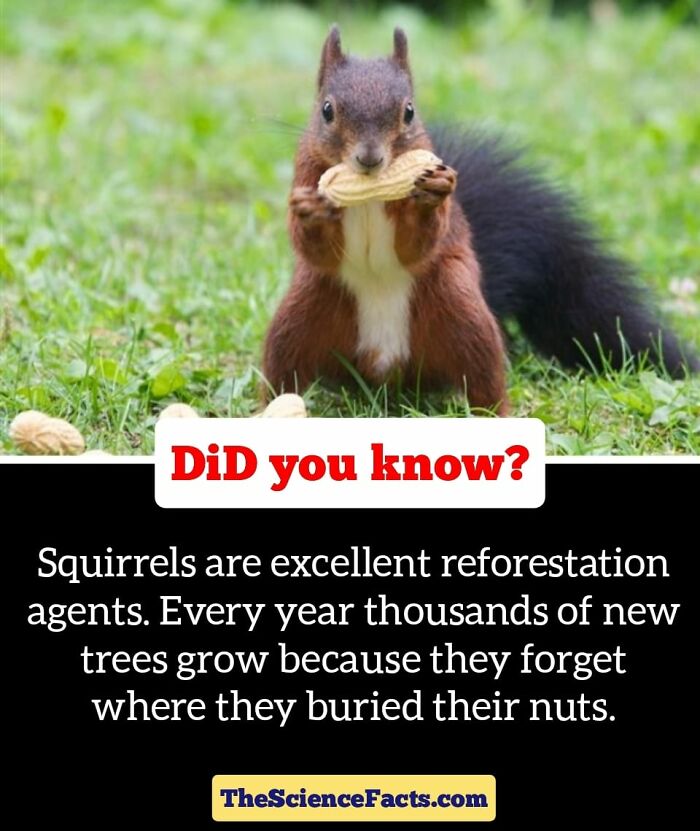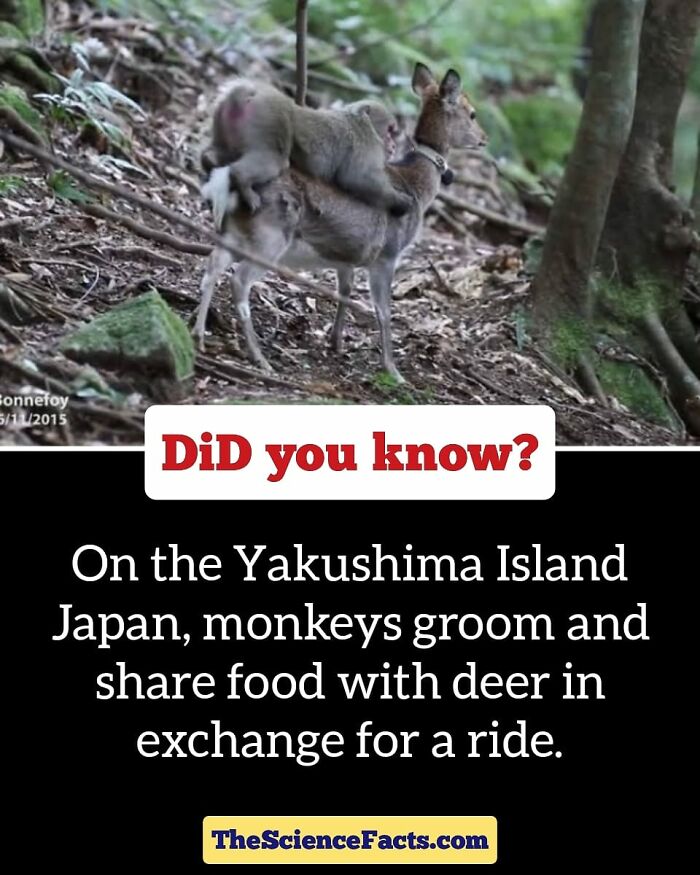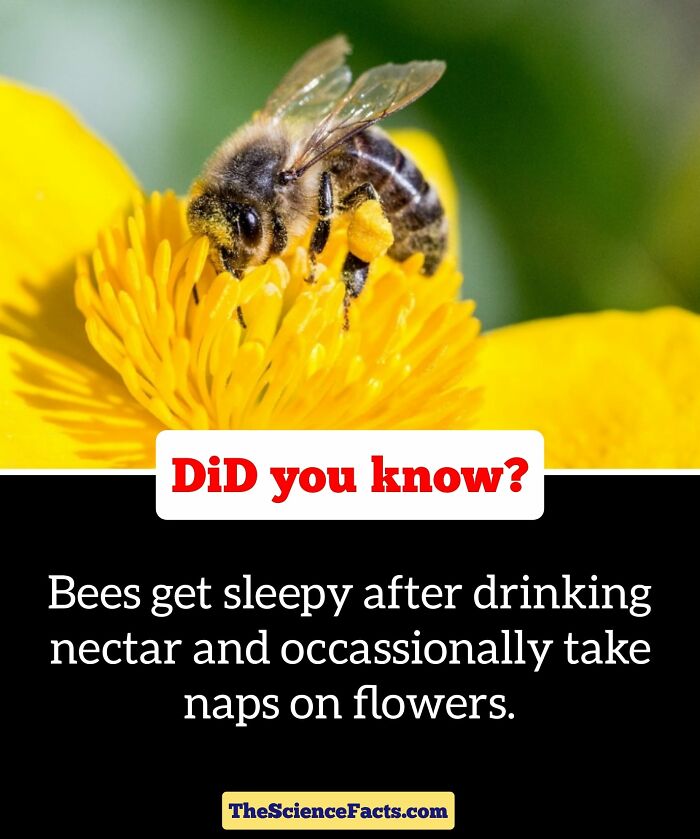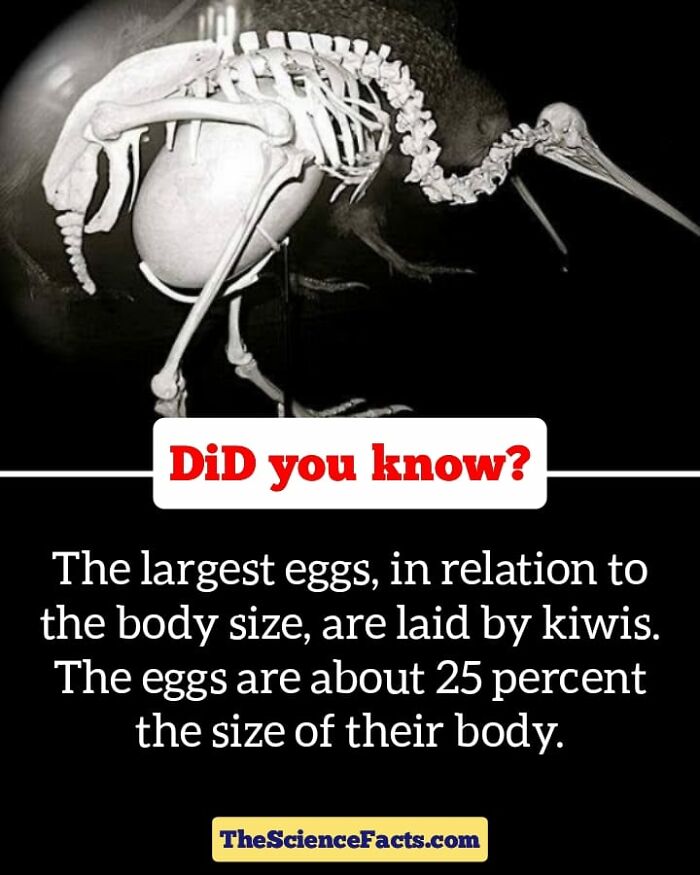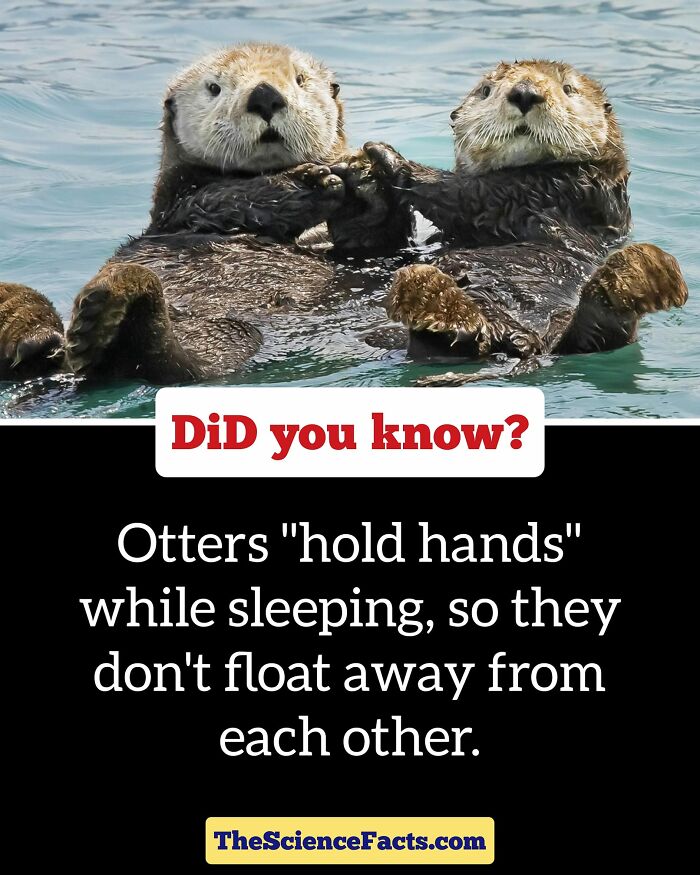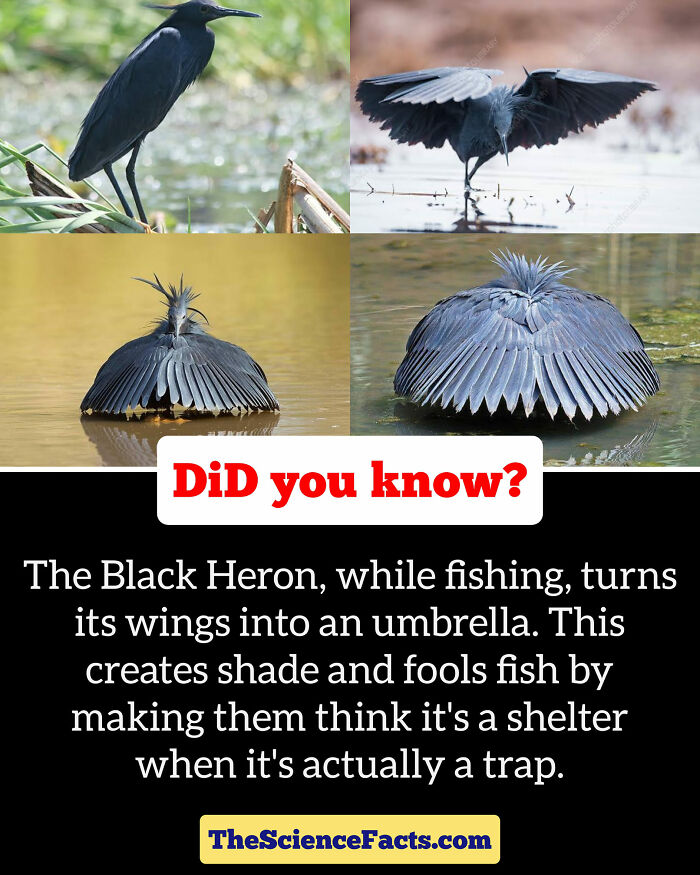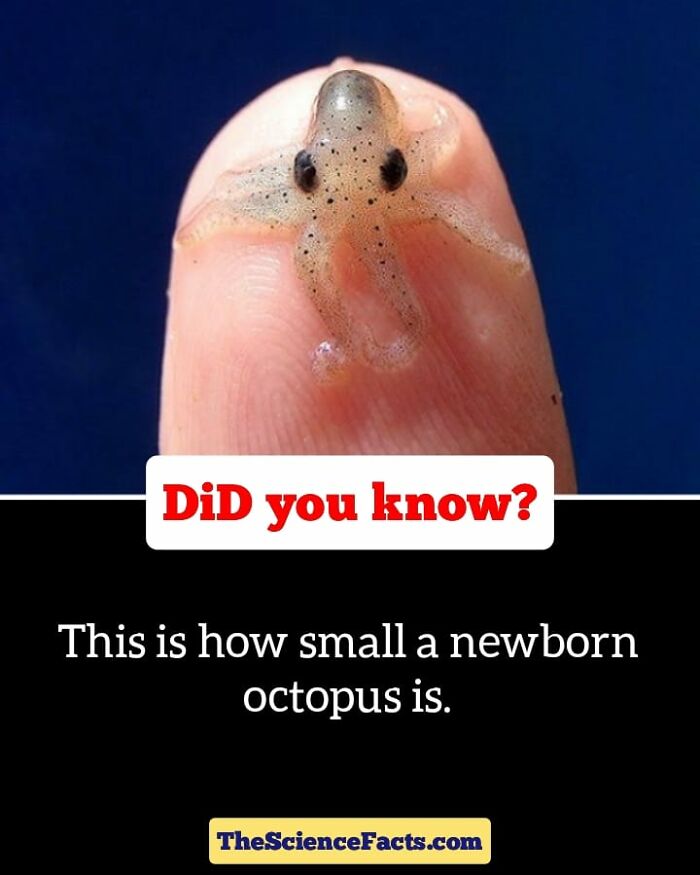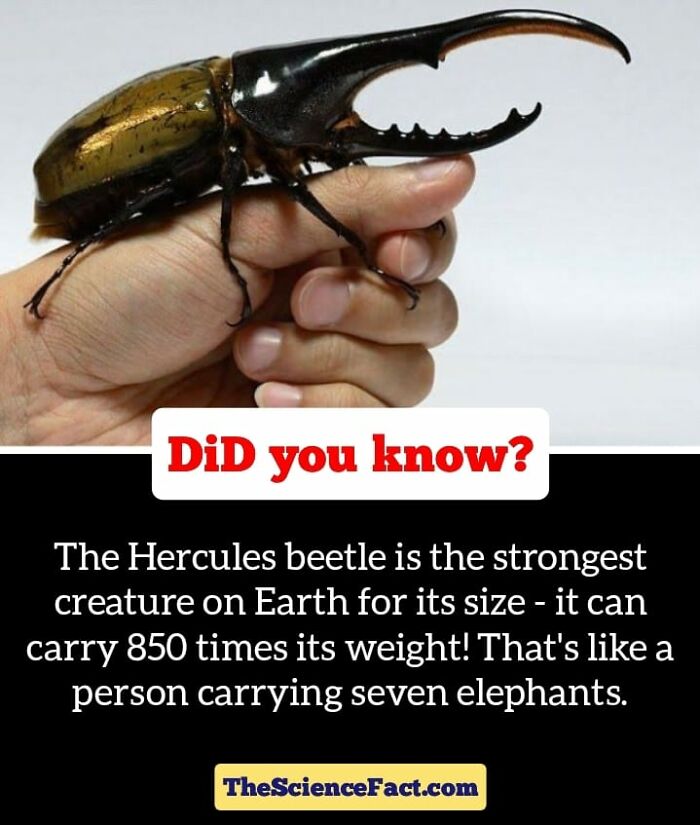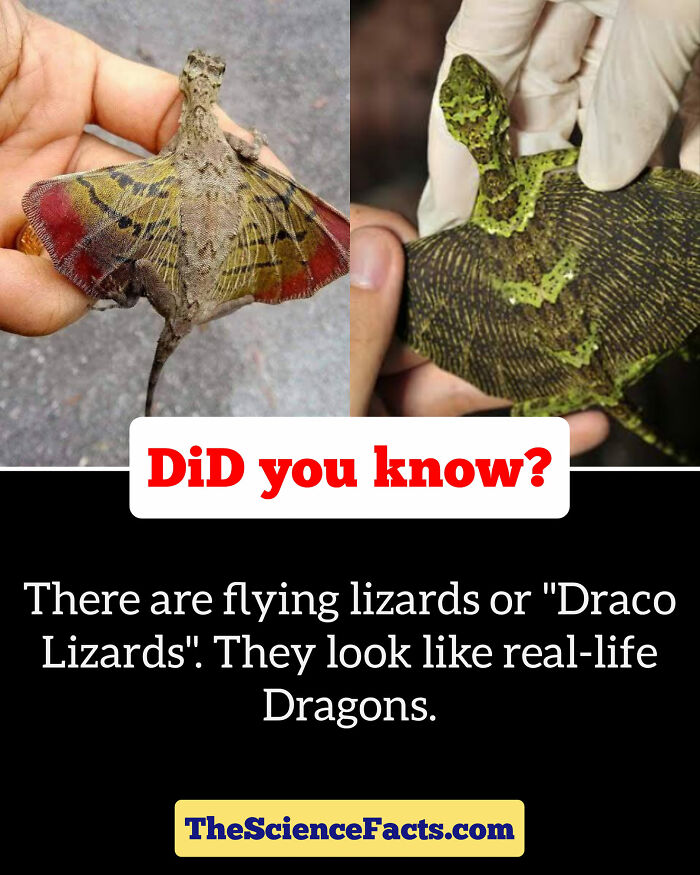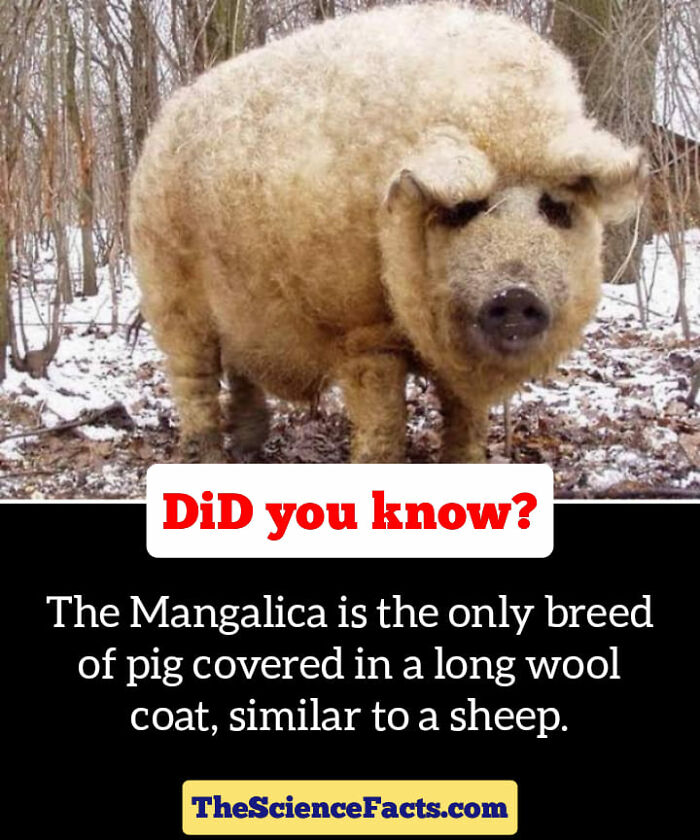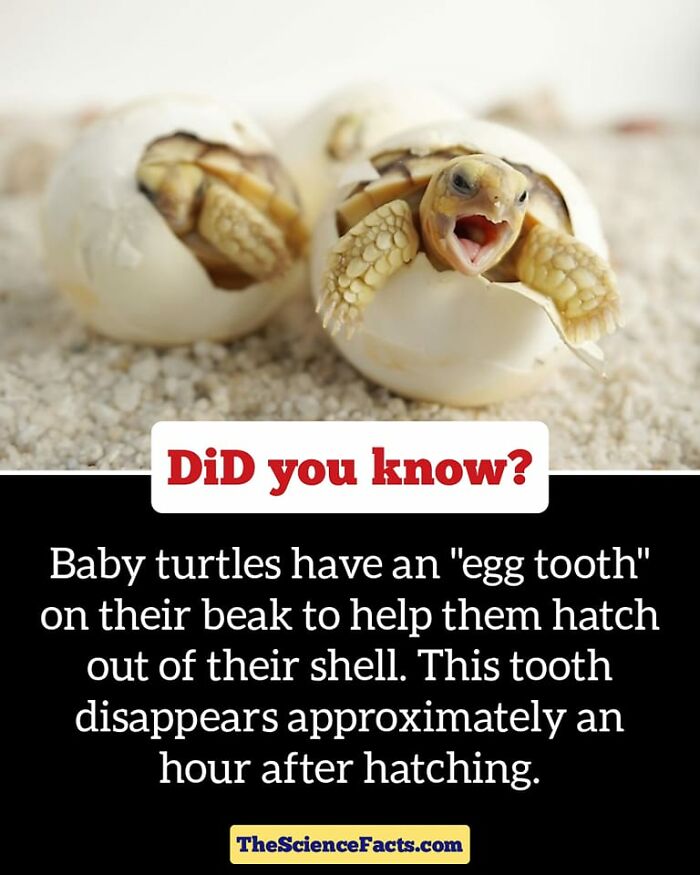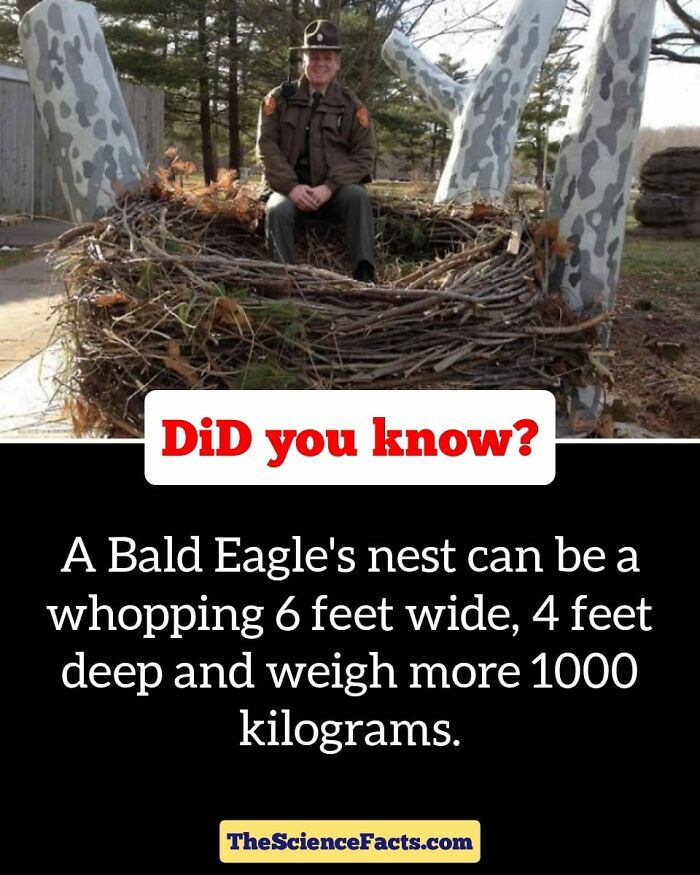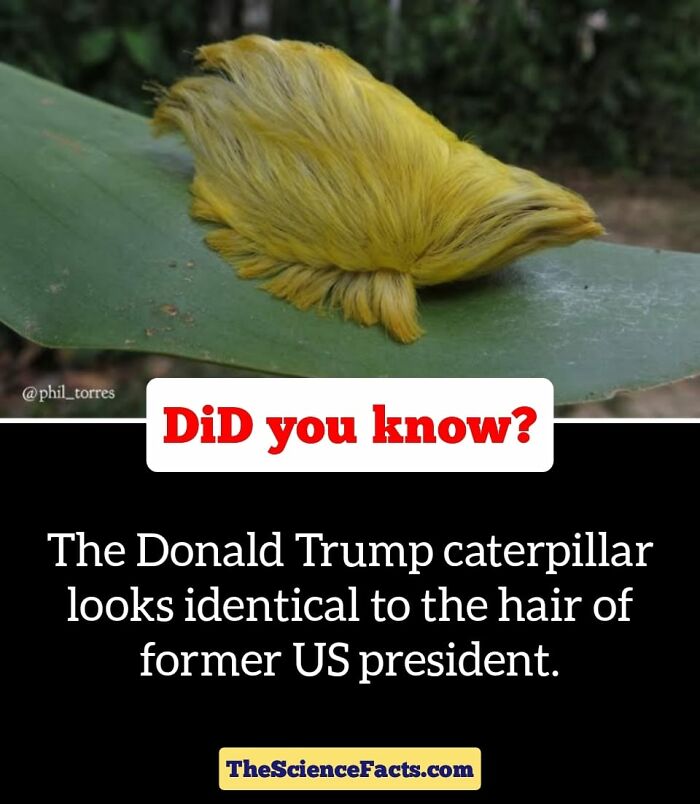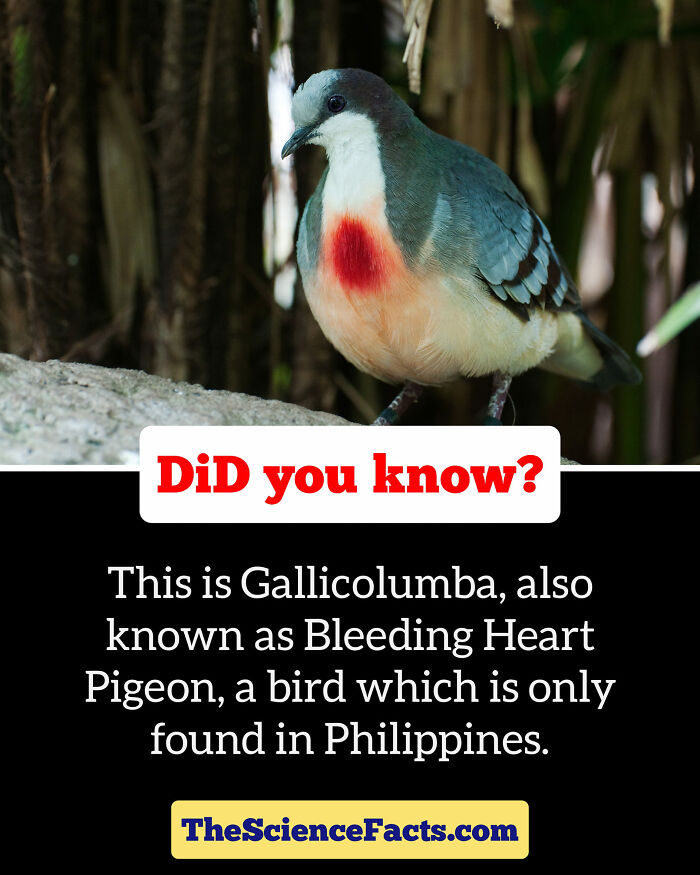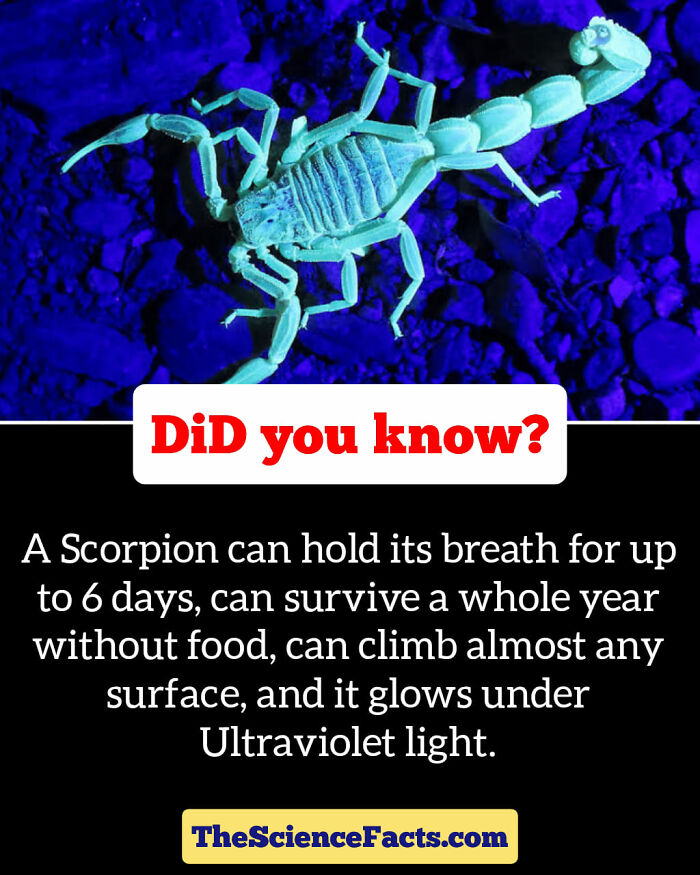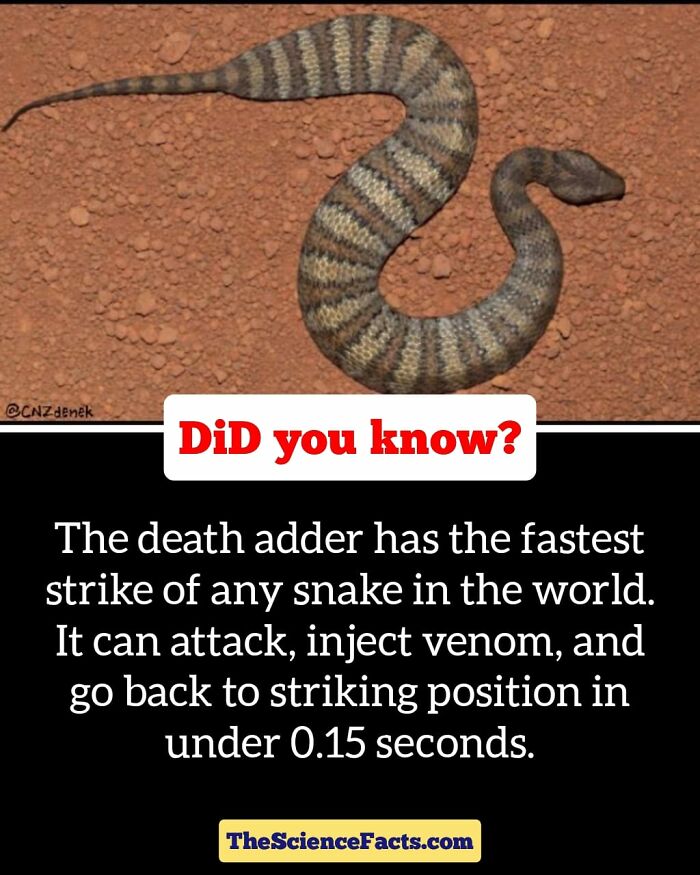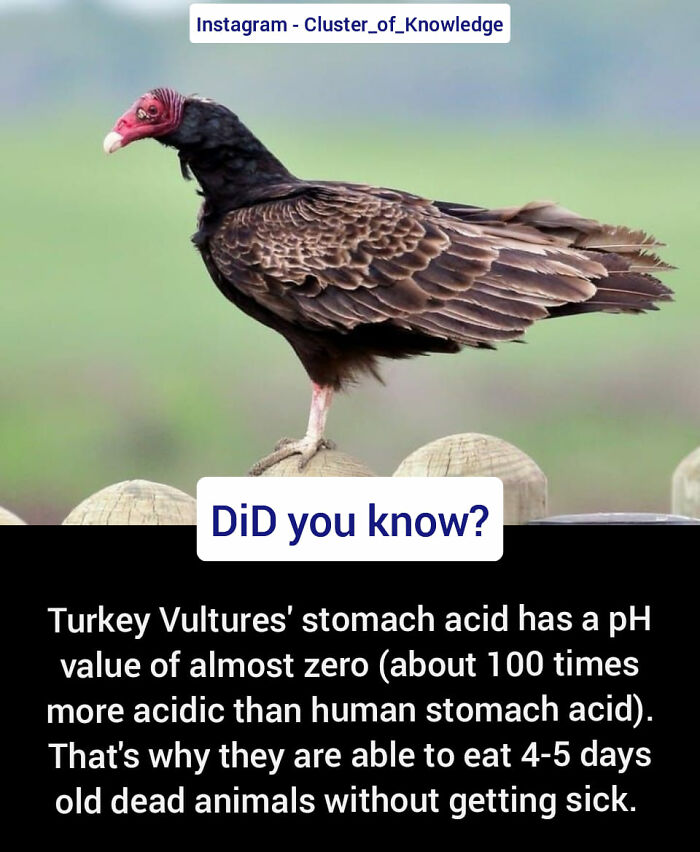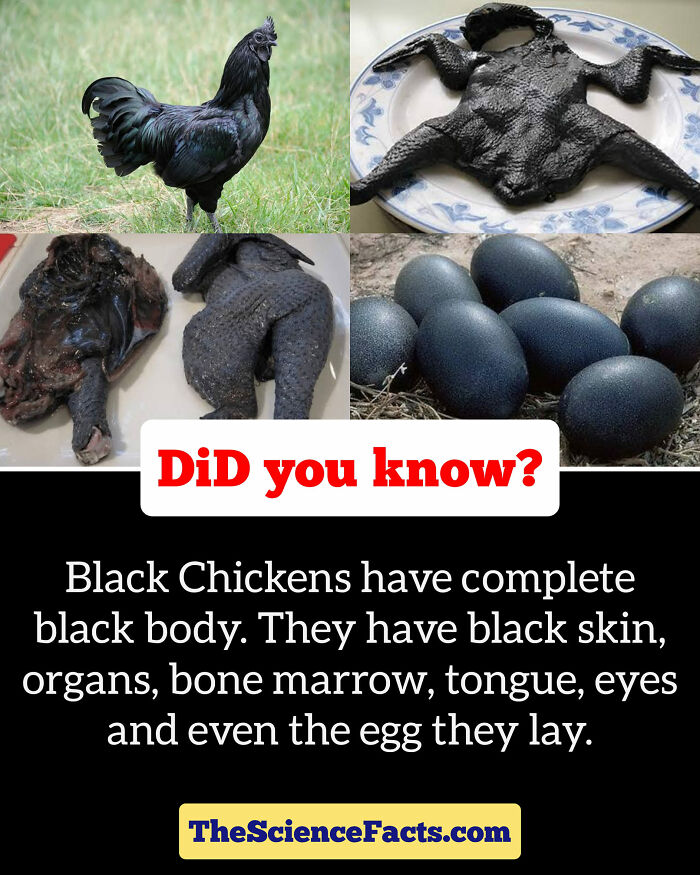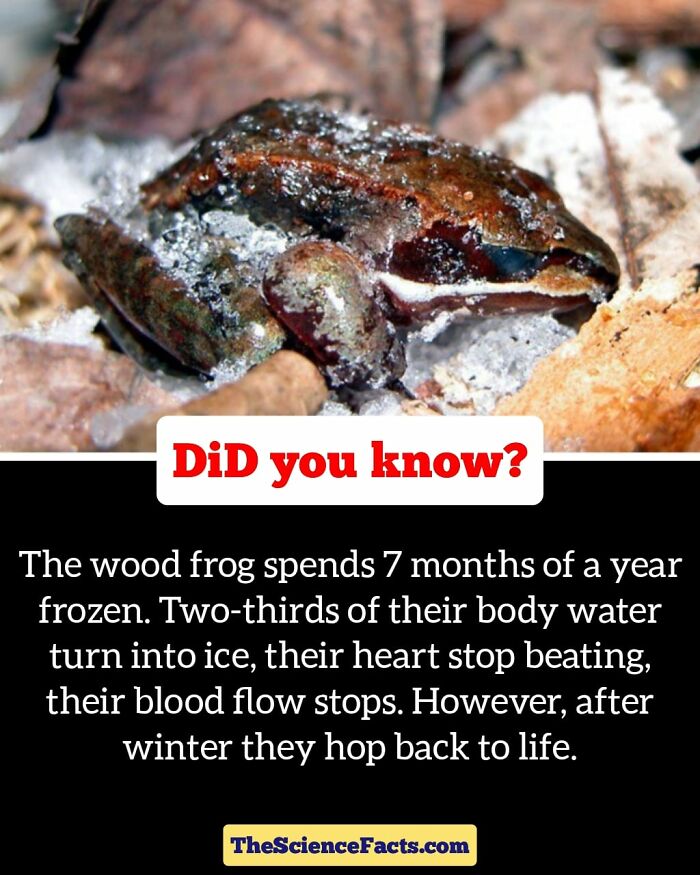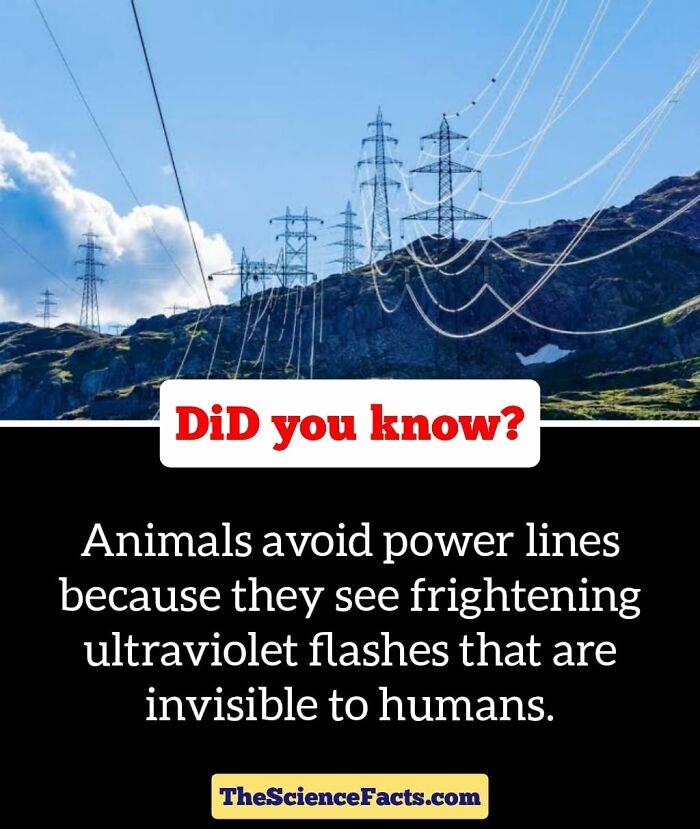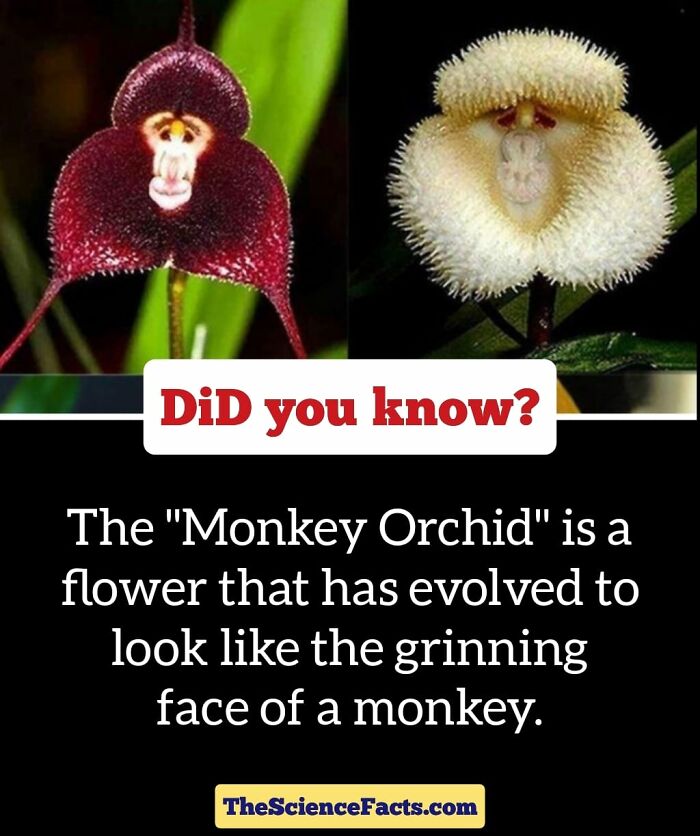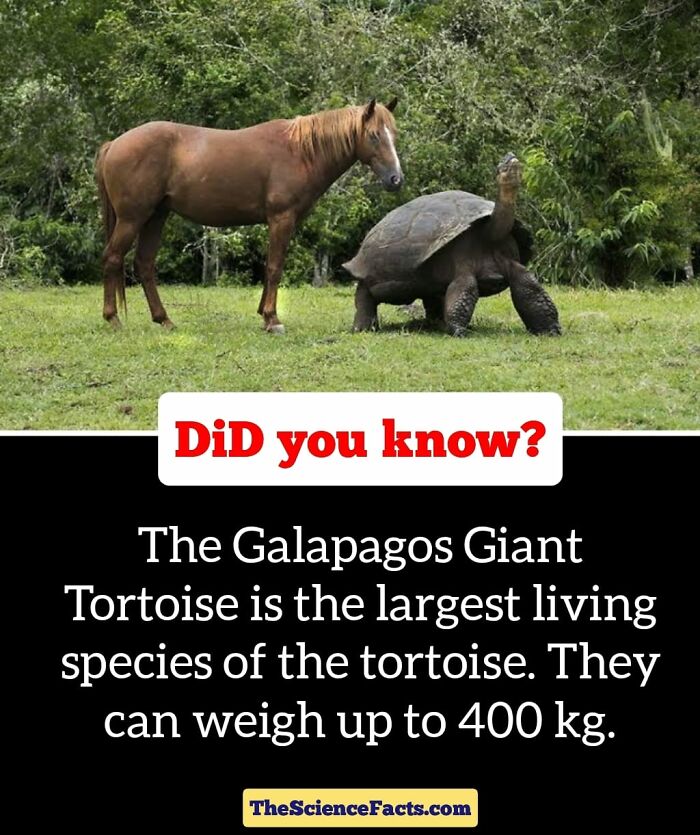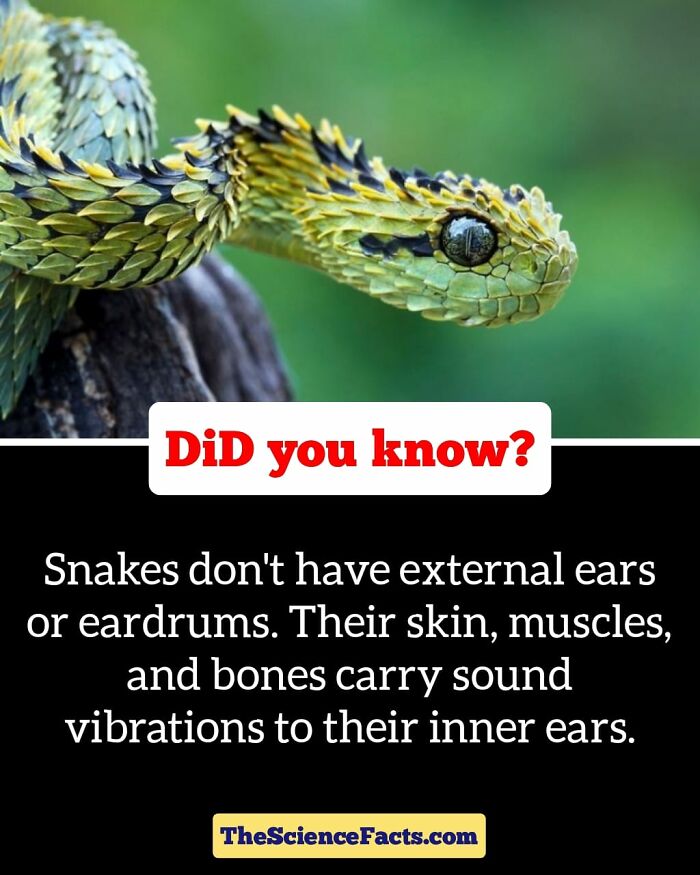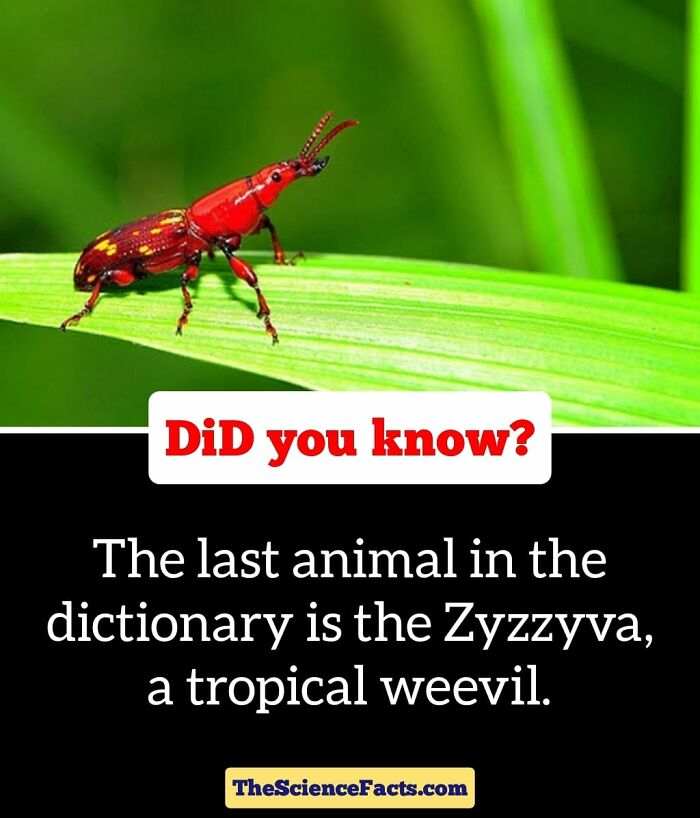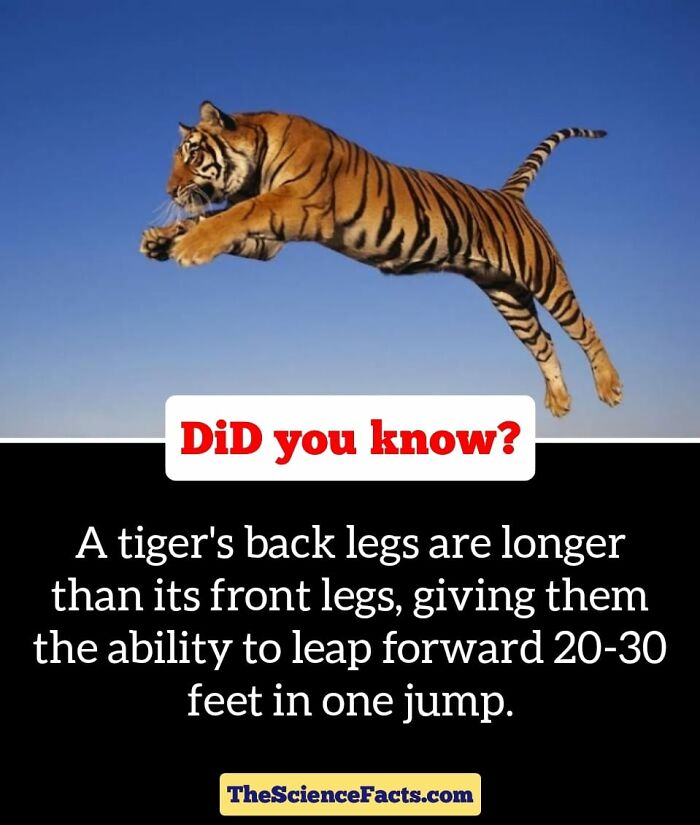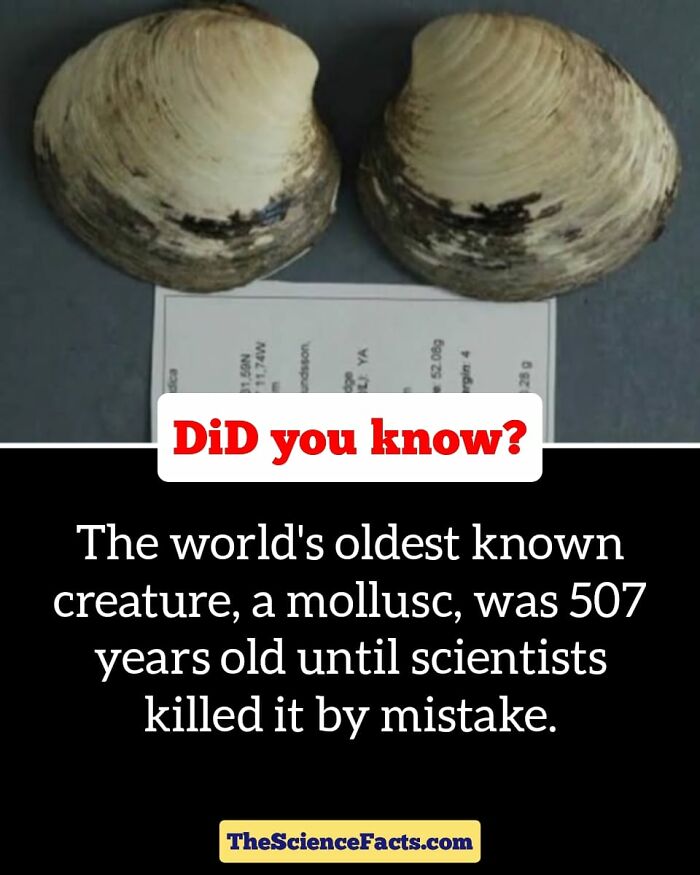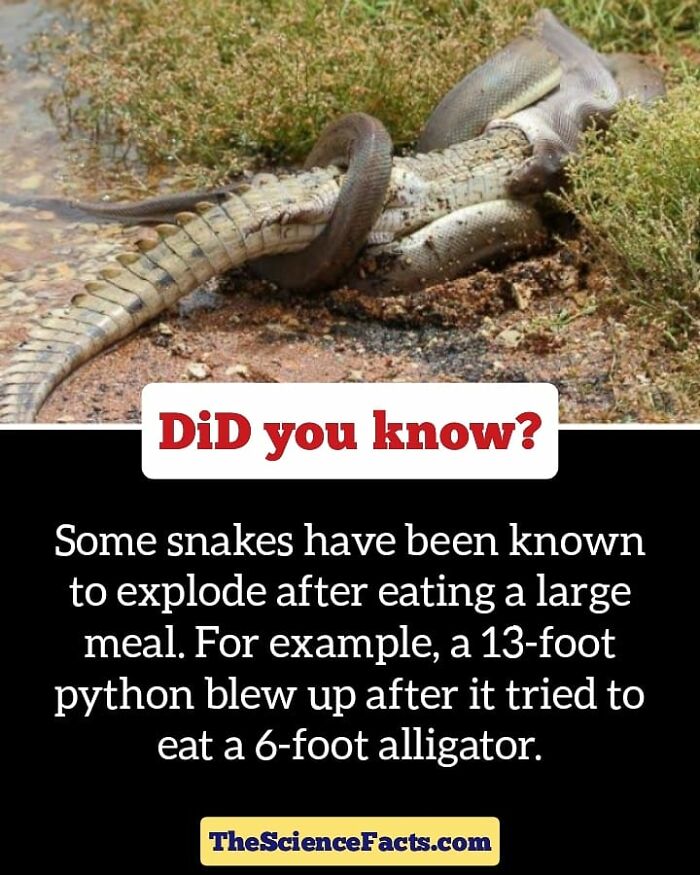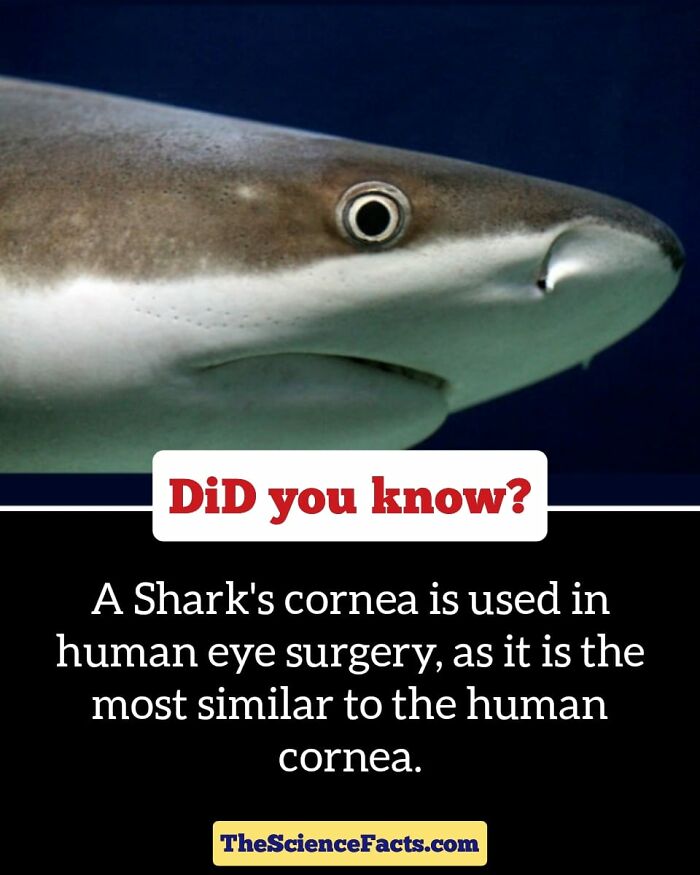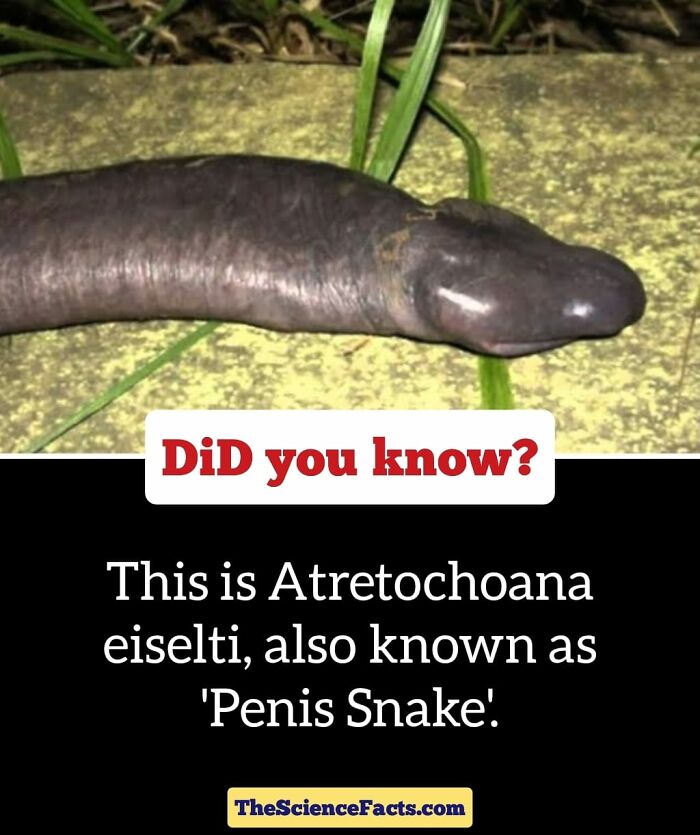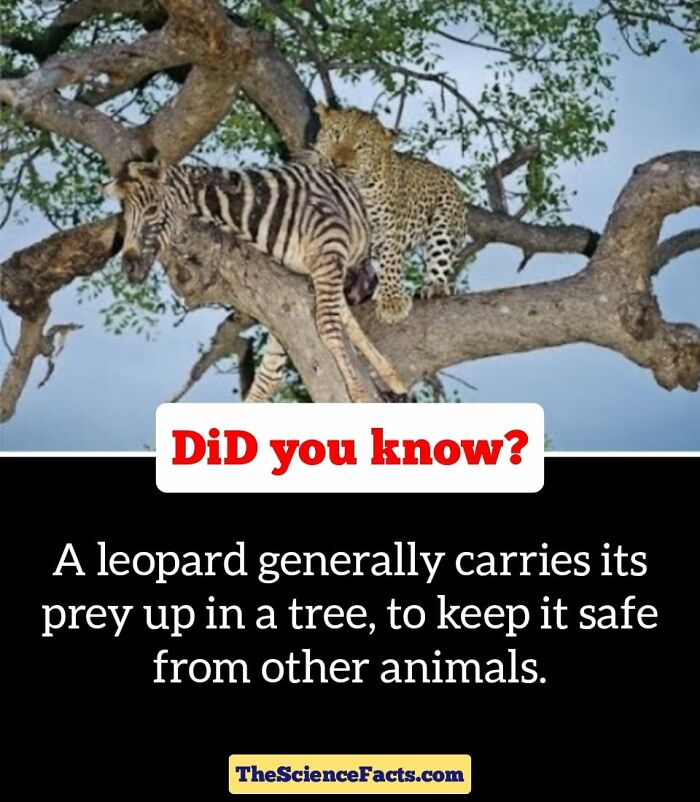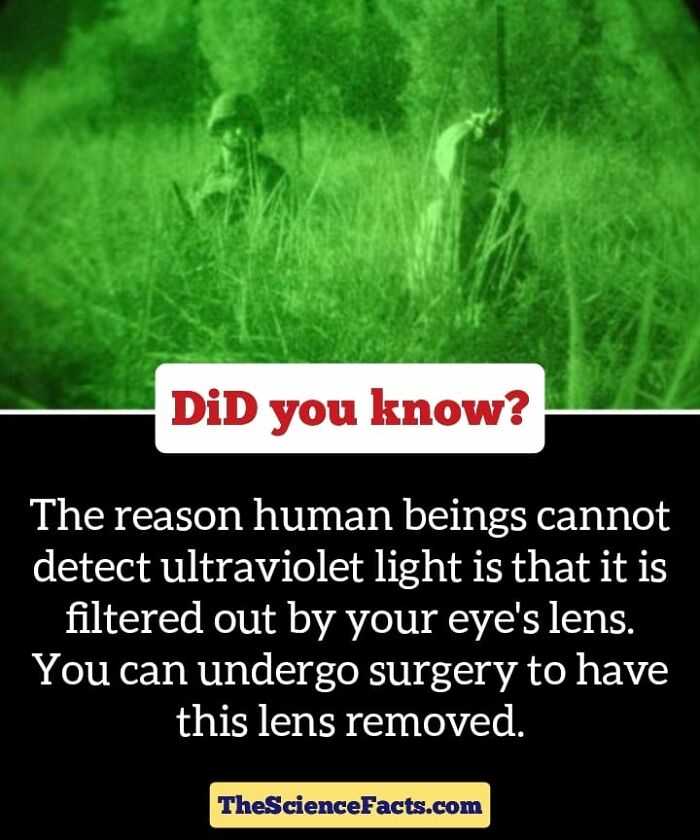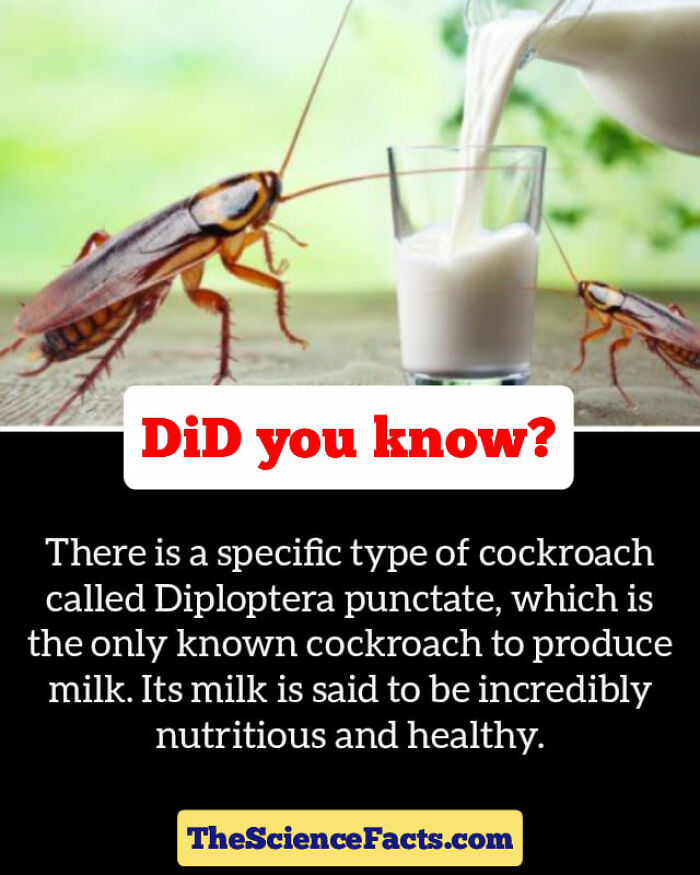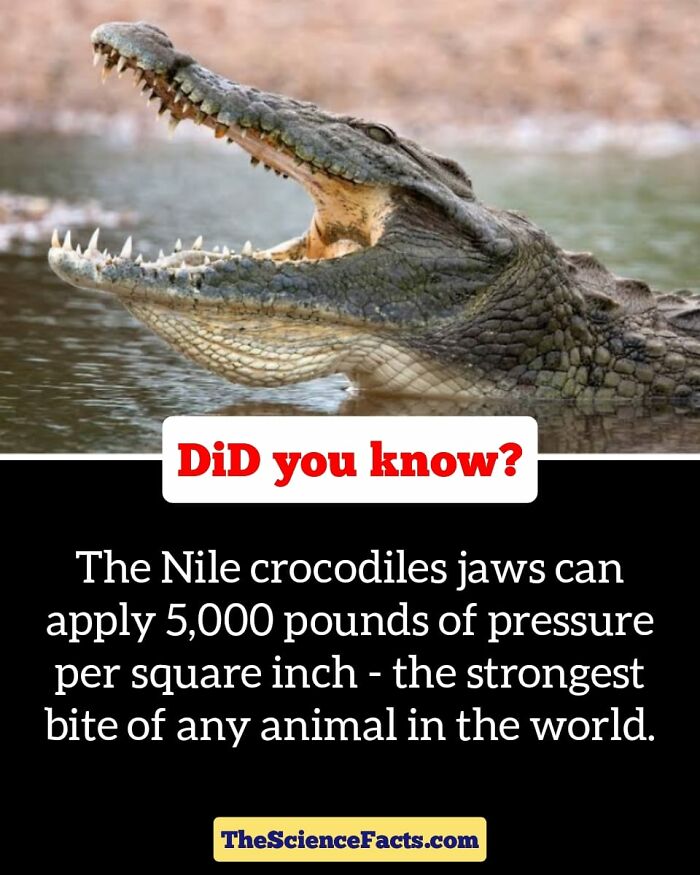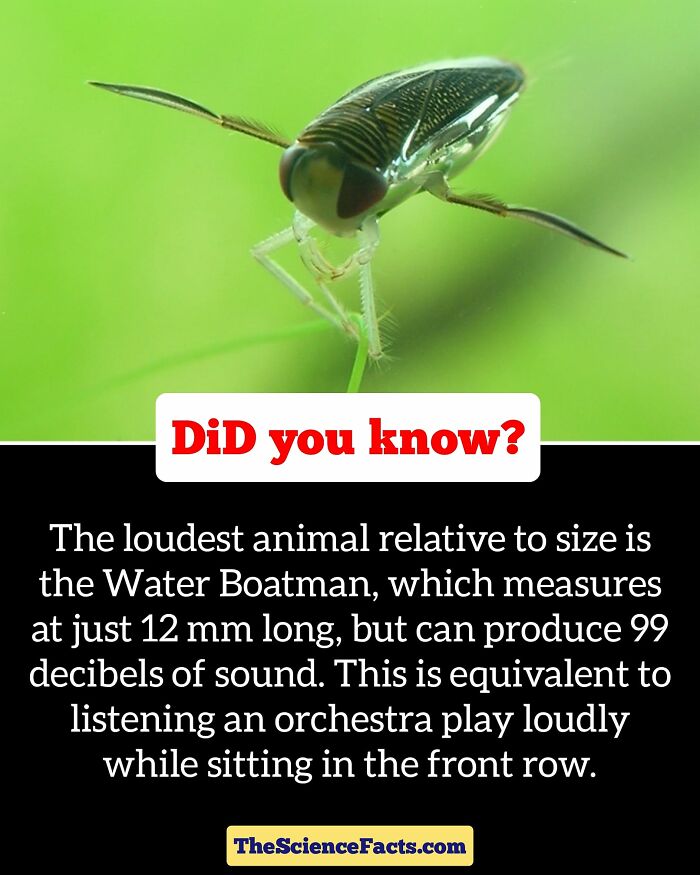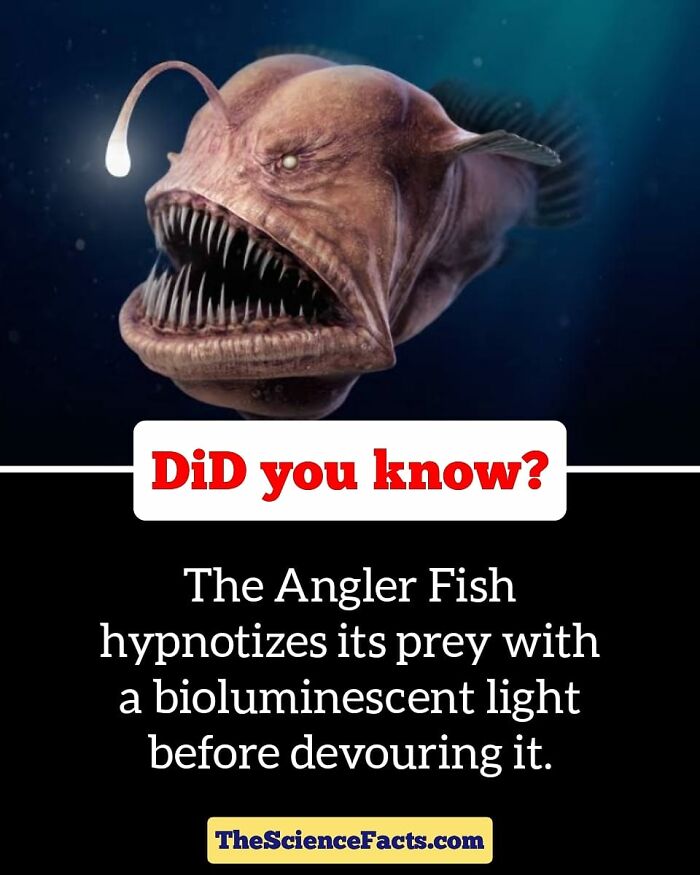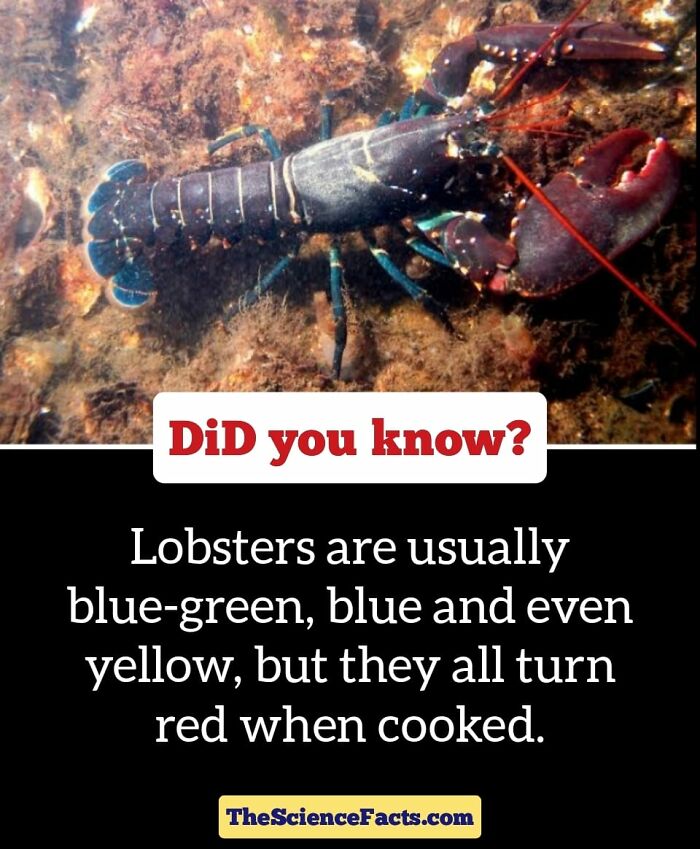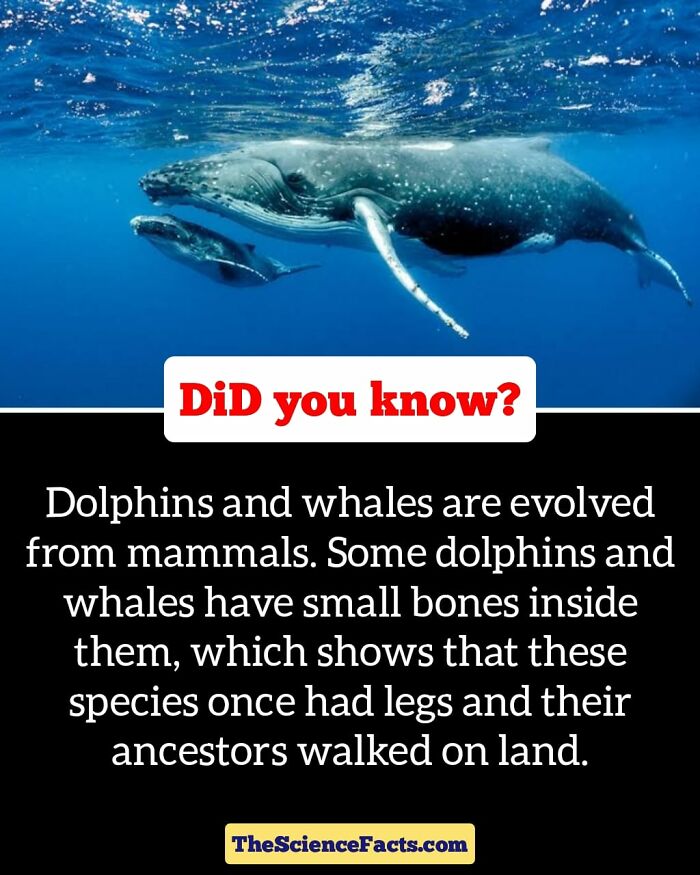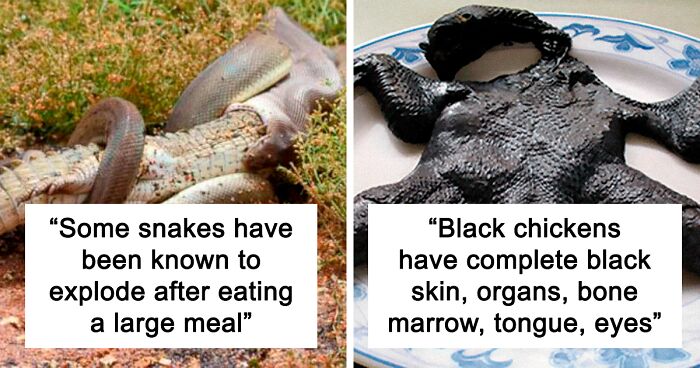
40 Weird But Cool Wildlife Facts That You Can Throw Out In Casual Conversation, As Shared On This Facebook Group
Did you know that koalas sleep for 18-20 hours a day? I know, I’m jealous too. Or how about the fact that red pandas are more closely related to weasels and skunks than actual pandas? Did you know that cheetahs can reach speeds of up to 64 miles per hour in only 3 seconds? I’ll be telling that one to my car to try to inspire it to pick up the pace… There are no limits to the amount of interesting facts we can learn about wildlife, so buckle up, because this list is a wonderful place to start.
We’ve gone through The Wildlife Fact Facebook group to hand pick some of the most fascinating, hilarious and intriguing tidbits of information about animals that you may have never heard before. Be sure to upvote the facts that blow your mind, and then let us know in the comments if you know anything else about these wild animals that your fellow pandas might interested in learning. Keep reading to also find an interview with Stefan Wolfe, host of the Relax With Animal Facts podcast, to hear some insight from an animal expert. And if you’re looking for even more fun facts about animals from Bored Panda, you can check out one of our previous articles on a similar topic right here.
This post may include affiliate links.
We reached out to Stefan Wolfe, host of the Relax With Animal Facts podcast, to hear how his podcast started and why he loves sharing animal facts with listeners. "I’ve always found animals to be fascinating and strikingly complex," Stefan shared. "I would catch grasshoppers in the backyard, and flatten my young face on glass enclosures at aquariums—if only I could see the manatees just a bit closer. My interest peaked in college, and I decided to start the podcast to help other people learn right alongside me. To be able to—if just for a few moments—tip-toe away from the hustle and bustle of life into jungles and seas; where the uniqueness of our animal friends awaits discovery. I love sharing animal facts every week with people because I have the joy of seeing the excitement of listeners. Fan-mail speaking of family dinners enlivened with animal facts, traffic jams made brighter, a restless night’s sleep made peaceful and enjoyable; these are the reasons why I am grateful to share animal facts each week."
We also asked Stefan if he has a favorite animal or favorite animal fact he has shared on his show. "My favorite animal has always cycled through different primates, but I have held orangutans in the top-spot for a long time," he told Bored Panda. "My favorite fact about them is their curiosity and capacity for learning. There is an Orangutan Jungle School in Indonesia that rescues orphaned orangutans and helps them to grasp the skills they would have acquired from their parents. The Smithsonian Channel shows them learning to husk and crack open coconuts by imitating their carer’s. There is also the obligatory drama of the young orange-fluffed primates over the sweet water inside. These great-apes would make for some great reality TV."
Next, we asked Stefan why we should all care about animals so much. "Animals are completely woven into our culture and history. We should care because to neglect an appreciation of them is to neglect a big part of what makes us human. We all have one thing in common with our great-great grandparents, and that is that they knew and had contact with animals," Stefan explained. "It may have been fluffy highland cows or maybe Jurassic-like crocodiles, but animals are a part of life regardless of our geography. They inspire wonderful literature and innovative design. We today can almost forget how majestic a horse is, or how wondrous it is to have 440,000-pound sea creatures bellowing in our oceans. We make robotic arms to mimic elephant trunks, and sport sonar in modern ships because of dolphins. We ought to care because there is still so much that we have yet to learn from them, and a great deal to already be grateful for."
Lastly, Stefan shared, "We live in a time of tremendous opportunity for knowledge in the digital age that we live in. Mountains of books, videos, and articles grant us a privilege unknown to much of our history. These are all great things—but in the midst of internet noise and quickly moving thumbs, we have forgotten what it means to wonder. Admiration and curiosity are now things that we have to be more cognizant in exercising, because there is abundant joy in embracing the things that make us human. Get passionate, get excited, there is so much to be discovered!"
If you'd like to hear more wise words from Stefan and learn about the wonderful world of wildlife, be sure to check out the Relax With Animal Facts podcast right here.
Animals are so captivating. We live among them, to an extent, but many of us know very little about most of them. When we go to the zoo or watch a documentary featuring amazing wildlife, we get a small glimpse into their world, but they still tend to be mysteries to us. That’s why The Wildlife Fact Facebook group is so much fun. Followers can see adorable photos of interesting animals paired with fun facts about them that you probably did not learn in school. Clearly, the page appeals to many people as well, as it has over 41k followers at the moment.
But if this list of photos is not enough to convince you why we should all be interested in wildlife, maybe the World Wide Fund For Nature can. According to their blog post “Reasons Why Wildlife Conservation Should be on your To-Do List”, there has been a 60% decline in the populations of many species over the past 4 decades. It is vital that humans take action to prevent many species from going extinct in the coming years and to ensure that our planet can continue functioning healthily.
One reason animal populations must be protected is to also protect the planet from climate change. Forests play a crucial role in keeping our atmosphere healthy by storing carbon, but animals do their part as well. Wildlife in forests can actually lessen the devastating effects of forest fires when they hit by eating grass and keeping it at minimal levels. When grass is wildly unkempt, fires can spread extremely rapidly, so herbivores do a great job as natural lawnmowers.
Even large, wild grass eaters like elephants, zebras, rhinos and camels are great because they keep grass levels down without producing large amounts of methane. Contrary to how livestock digest grass, these animals have one large stomach and do not need to regurgitate their food. There is always a domino effect when one part of the ecosystem is damaged, so we cannot turn a blind eye when these animals are in danger.
The World Wide Fund For Nature also explains how important animals can be for medical advancements. It is amazing what animals can provide us, and scientists have found that these beautiful and fascinating creatures can sometimes even save our lives. Amphibians are particularly important, as compounds extracted from frogs have been found to help treat depression, seizures, strokes and memory loss.
Even something called “frog glue”, or an adhesive found in the glands of the Australian holy cross frog species, has been used to treat knee injuries. Sheep’s wool has also provided scientists with lanolin and Vitamin D3. And if you are someone who has struggled with menopausal symptoms, there might be an unconventional cure for you. Premarin, or conjugated estrogen, is isolated from the urine of pregnant horses. As bizarre as that sounds, when you are desperate for relief from uncomfortable symptoms, you might be more open minded than usual.
I once found one in a lake and put it in a cup - watched it for HOURS - her name was Molly btw lol I was 12
Animals also play a key role in keeping soil fertile and healthy, allowing plants to continue to thrive. Feces and urine from wildlife provide all of the necessary nutrients and minerals soil needs and do more than any fertilizer could ever dream of. Animals can also help distribute these nutrients through various lifestyle habits. Hippos, for example, graze during the night and help bring nutrients into the rivers nearby, which in turn increases the productivity of fish. All living things are connected, and even the gross parts of being alive that we might not often consider are vital to maintaining a healthy ecosystem.
The National Wildlife Federation is also a key organization advocating for the protection of various species. On their website, they explain that, “By conserving wildlife, we're ensuring that future generations can enjoy our natural world and the incredible species that live within it. To help protect wildlife, it's important to understand how species interact within their ecosystems, and how they're affected by environmental and human influences.”
They explain that our impact on the planet can reach animals, or even come back to us, faster than we may realize. For example, when an animal eats their prey, they are consuming all of the chemicals and nutrients inside of that prey. If that creature had been exposed to human-caused pollution that left toxins stored in its fat cells and tissues, those are passed on as well. These toxins keep going higher and higher up the food chain through bioaccumulation and can eventually kill species.
This is what makes me into a hiccuping, snorting, snotty ugly cryer.
I find this oddly beautiful, somehow. Not because it looks like the pigeon has been hurt, but the bleeding heart concept.
Of course it can😖seems like the worst things can survive anything. Take cockroaches for example. Hey, at least you can drink nutritious milk from one🤢
Species are also usually resilient and can bounce back from a variety of natural disturbances like floods, earthquakes, fires, diseases and droughts. But human-caused disturbances can be trickier to come back from, especially when they are increasing in frequency. Deforestation, pollution, habitat fragmentation and more keep putting increased stress on wildlife populations, making it harder and harder for animals to survive these pressures. When we have no awareness of our impact on these innocent species, we continue to disrupt them without a care in the world. It is vital to understand our impact and how to minimize it.
Yes, they have black skin and bones. No, the eggs are Emu eggs. If you look closely, they are WAY larger than chicken eggs.
So what can we do to help protect biodiversity? It would be devastating for any of the amazing animals featured on this list to be wiped out, and it would be a massive warning sign that every other species is in danger of eventually going extinct as well. According to Greenpeace, governments must begin working with people who actually are connected to nature and understand how to respect and protect it. Indigenous communities, for example, have great reputations of being stewards of their lands, and they can be invaluable teachers for government officials to learn how to take care of animals and protect our planet.
Talk about being cold as ice. Bet they serve up revenge really well.
Well - "animals" here means "birds, rodents, and reindeer" (plus various insects), and "avoid" means "don't crash into them". https://slate.com/technology/2014/03/power-lines-and-animals-flashing-uv-light-scares-reindeer.html And since I don't think that reindeer and rodents have a lot of opportunities to crash into power lines, this fact largely applies for birds. Still interesting to know, though.
Greenpeace also advocates for “vast ocean sanctuaries and rights-based protections on land [to] help tackle climate breakdown, species loss, food security and the risk of future pandemics”. “This year, Greenpeace is calling on governments to agree to an ambitious and implementable rehabilitation plan for nature,” their website states. “We’re calling for a commitment to bold targets that protect at least 30% of our lands and oceans by 2030, with a clear plan for how to get there in partnership with local and Indigenous communities, and enough funding and resources to make it happen. We cannot risk destroying the web of life that sustains us. We are part of nature, and if it disappears, our future will disappear with it. Protecting biodiversity is a way to protect ourselves.”
We hope you are enjoying this fascinating list full of some of the cutest and most intriguing creatures our world has to offer. Be sure to upvote the facts that you’d like all your other pandas to know, and then let us know in the comments if you have any more facts that you would have liked to see on this list. Remember that if we want to keep enjoying all of these amazing creatures, we’ve got to take care of the planet first and foremost, so don’t forget to do whatever you can to keep those little critters safe.
Isn't this true for all cats? I mean the legs, not the 20-30ft thing.
Leopards are incredibly strong. They are also one of the few big cats willing to hunt in water or land. They also have no fear of people.
Even though they have a very strong bite, they can't open their mouths with much force. You could easily hold their mouth shut with one hand. That is of course, if they weren't thrashing around and ripping your limbs off. That's why you often see trappers using electrical tape. It will stick to itself when wet and doesn't need to provide that much tensile strength.
Now, I like to listen to “bug music”, but not if it’s louder than a passing car full of teenagers blasting their music.
Not that it matters, but I've wondered on lists like this, 42 items, reduced to 40 based on user votes. Why not just leave the other two up?
I actually pressed on and didn't see anything new - I had to start over again.
Load More Replies...Let's be honest, you can't throw any of this out in any casual conversation. Nice thread tho.
So you don't recommend walking up to people in the pub and starting conversations that way then? Shame.
Load More Replies...I've been reading about and watching a lot of nature shows, and all I can say is animals (and some plants) have super powers. We are quite puny in comparison.
Not that it matters, but I've wondered on lists like this, 42 items, reduced to 40 based on user votes. Why not just leave the other two up?
I actually pressed on and didn't see anything new - I had to start over again.
Load More Replies...Let's be honest, you can't throw any of this out in any casual conversation. Nice thread tho.
So you don't recommend walking up to people in the pub and starting conversations that way then? Shame.
Load More Replies...I've been reading about and watching a lot of nature shows, and all I can say is animals (and some plants) have super powers. We are quite puny in comparison.

 Dark Mode
Dark Mode 

 No fees, cancel anytime
No fees, cancel anytime 








